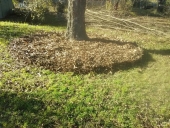
 1
1




Look deep into nature, and then you will understand everything better. —Albert Einstein
 5
5




 1
1




 2
2




I don't own the plants, they own me.
 1
1




Look deep into nature, and then you will understand everything better. —Albert Einstein
 2
2








Look deep into nature, and then you will understand everything better. —Albert Einstein
 1
1




"The rule of no realm is mine. But all worthy things that are in peril as the world now stands, these are my care. And for my part, I shall not wholly fail in my task if anything that passes through this night can still grow fairer or bear fruit and flower again in days to come. For I too am a steward. Did you not know?" Gandolf




Look deep into nature, and then you will understand everything better. —Albert Einstein




Look deep into nature, and then you will understand everything better. —Albert Einstein
 1
1




Invasive plants are Earth's way of insisting we notice her medicines. Stephen Herrod Buhner
Everyone learns what works by learning what doesn't work. Stephen Herrod Buhner
 1
1




Look deep into nature, and then you will understand everything better. —Albert Einstein




Pamela said, "Looking into how to determine exactly where all three septic tanks and drain pipes are located on this property. Found nothing in the purchase paperwork.
Invasive plants are Earth's way of insisting we notice her medicines. Stephen Herrod Buhner
Everyone learns what works by learning what doesn't work. Stephen Herrod Buhner




growing food and medicine, keeping chickens, heating with wood, learning the land
https://mywildwisconsin.org

|
Go ahead, make my day. And make it with this tiny ad.
GAMCOD 2025: 200 square feet; Zero degrees F or colder; calories cheap and easy
https://permies.com/wiki/270034/GAMCOD-square-feet-degrees-colder
|

